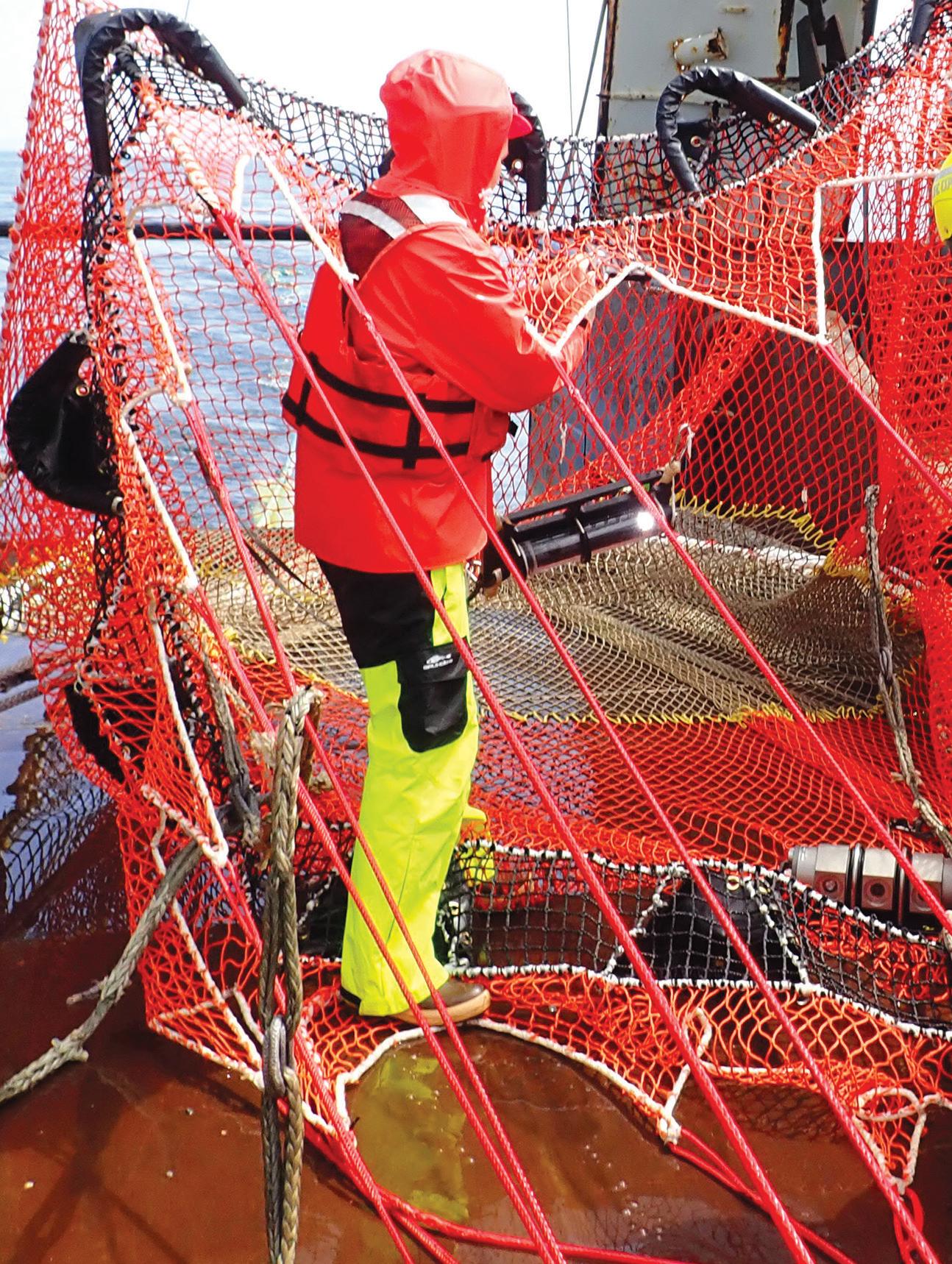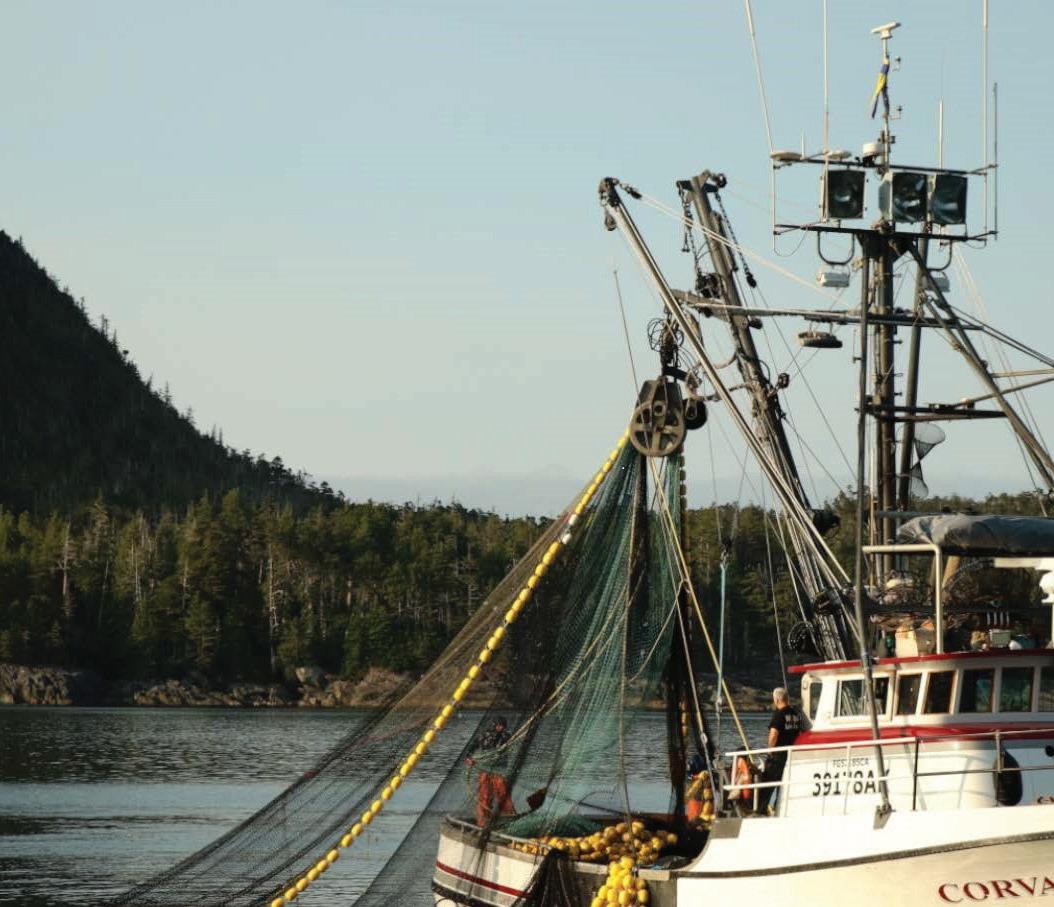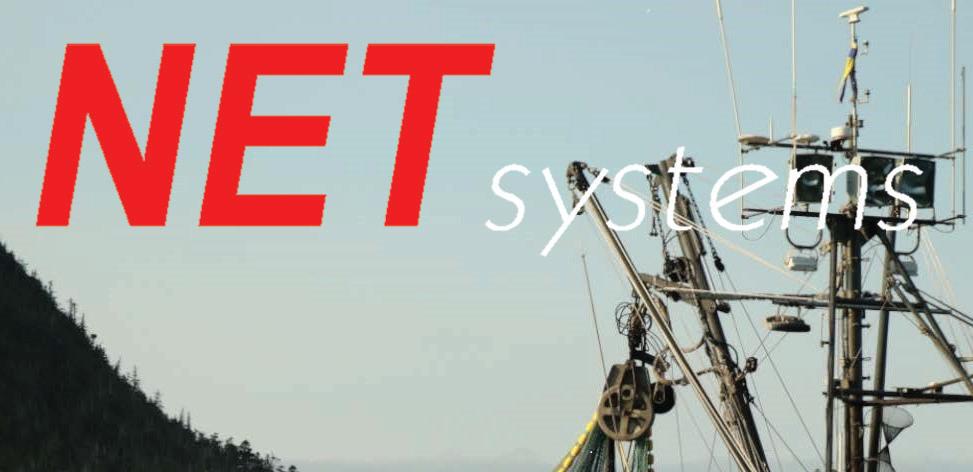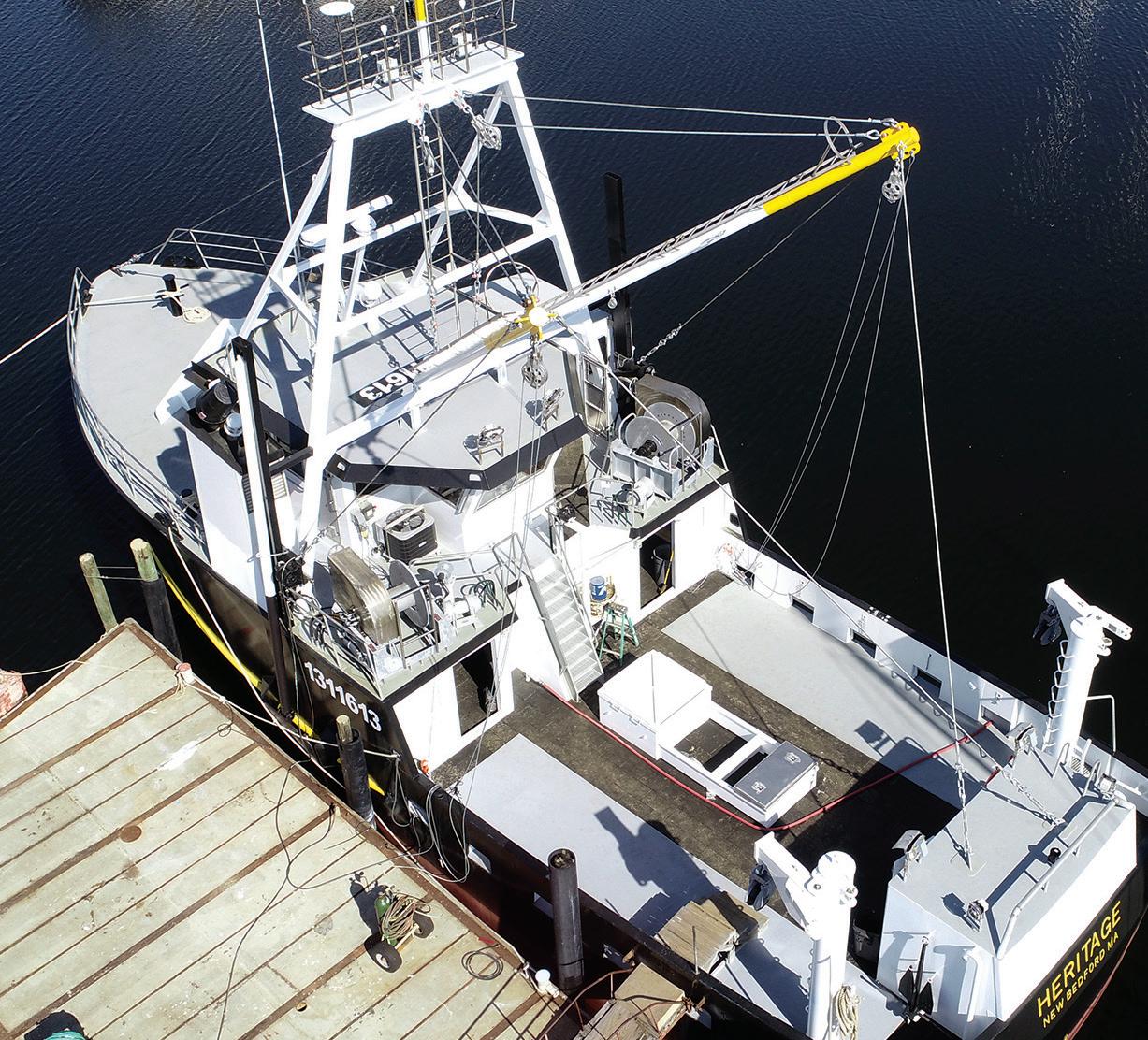
23 minute read
Permit News
Dock Street Brokers
(206) 789-5101 (800) 683-0297 www.dockstreetbrokers.com
For all the latest permit & IFQ listings please call or visit our website.
IFQ NEWS
*Price differences reflect the range from small blocks of D or C class on the lower end to unblocked B class unless ortherwise indicated.*
HALIBUT
At the time of this writing, the 2021 QS:IFQ ratios have been published and the season is about to start. Demand remains strong for 3A and 3B, with lack of supply the only hurdle for 3B buyers (sellers wanted). Increasing interest in 2C, but limited sales as a result of high price expectation by sellers. Activity in other areas continues to be limited, but there have been recent transactions. We expect grounds price to be the next factor to have a significant effect on the quota market. The latest is as follows:
AREA ESTIMATED VALUE
2C $40.00/# - $55.00/# - Increasing interest at reduced prices. 3A $37.00/# - $44.00/# - Recent sales, prices remain steady. 3B $23.00/# - $29.00/# - Strong demand, sellers wanted. 4A $10.00/# - $15.00/# - Some sales activity at reduced asking prices. 4B $10.00/# - $18.00/# - No activity despite low asking prices. 4C $10.00/# - $18.00/# - Recent activity at reduced asking prices. 4D $10.00/# - $18.00/# - Blocked and unblocked available.
SABLEFISH
While everyone was able to benefit from sablefish TAC increases, quota prices adjusted accordingly, with slight decreases on a per pound basis. However, there has been increasing interest from buyers, evidenced by recent and ongoing sales of CG, SE, and BS. Demand remains limited for AI, WG and WY. It is reasonable to speculate that any improvement to grounds prices would create a significant increase in demand from buyers. The latest is as follows:
AREA ESTIMATED VALUE
SE $12.00/# - $16.00/# - Little activity, reduced asking prices. WY $12.00/# - $16.00/# - Recent price reductions, make offers. CG $9.00/# - $13.00/# - Steady demand, recent sales. WG $6.00/# - $10.00/# - Slow, little unblocked available. AI $1.50/# - $7.00*/# (A class) - Unblocked available, no recent sales. BS $1.50/# - $8.00*/# (A class) - Increased interest from buyers, sellers wanted.
ALASKA PERMITS ESTIMATED VALUES
Power Troll $26k Area M Drift $180k Area M Seine $140k Area M Setnet $55k Bristol Bay Drift $188k Bristol Bay Setnet $55k Cook Inlet Drift $22k Kodiak Seine $35k PWS Drift $125k PWS Seine $140k SE Dungeness (75 - 300 pot) Variable - Sellers wanted Southeast Drift $55k Southeast Herring Seine $100k Southeast Salmon Seine $150k SE Chatham Black Cod $405k
WEST COAST PERMITS ESTIMATED VALUES
California Crab Variable - Call for info Very little activity in the permit market while the season is ongoing. Prices remain steady, but will likely change as new listings come up after the season. Call for more information. The latest is as follows: - 175 pot: $30k - $50k range - 250 pot: $45k - $60k less than 40’. $50k - $100k for 40’ - 60’ + - 300 - 350 pot: $70k - $150k, low availability - 400 - 450 pot: $100k - $280k, value dependent upon length - 500 pot: $250k - $400k+, highest value in 58’ and above CA Deeper Nearshore $35k - Sellers wanted CA Halibut Trawl $50k - $80k California Squid Variable - call for info CA Squid Light/Brail Variable - call for info Oregon Pink Shrimp $60k - $80k - Sellers wanted Oregon Crab Variable - call for info Steady demand for 500 pot permits over 50’ - 200 pot: $45k - $60k - 300 pot: $100k - $200k - 500 pot: $200k - $300k for <50’ & $6k - $7k per foot for >50’ Puget Sound Crab $157k Puget Sound Drift $10k Puget Sound Seine $85k Washington Crab Variable - call for info Reduced interest at current asking prices. - 300 pot: $90k - $160k depending on length - 500 pot: $300k - $400k depending on length Washington Pink Shrimp $40k - Leases available Washington Troll $20k Longline - Unendorsed $90k - $120k - Leases available at reduced prices. Longline - Sablefish Endorsed Variable - Reduced prices resulting in sales, more available. A-Trawl Variable - Call for info
BYE-BYE BYCATCH
Net design and electronics help fi shermen keep their catch clean

By Paul Molyneaux
atching hake and rock sh
Wswimming hard as they slip down the narrowing throat of a midwater trawl, it’s clear the net catches everything. But not everything belongs in the net. Alaska salmon, certain Paci c rock sh, and Atlantic cod are among the species midwater trawler captains work to avoid.
Under the banner of conservation engineering, shermen, regulators, marine electronics manufacturers, and net makers are working on a number of innovations — new bycatch excluder designs, LED lights, and cameras — that are helping midwater trawlers reduce bycatch.
“Bycatch is the number one reason shermen buy the system,” says Jason Whittle, vice president at Ocean Systems. Ocean Systems’ SeaTrex, according to Whittle, is
NOAA scientist Noelle Yochum (left) helps fi sherman Lauti Tuipala set a net with an experimental salmon excluder on the F/V Pacifi c Explorer. Simplicity is the name of the game for Ocean Systems’ SeaTrex camera system, including the onboard hardware. Fishermen use it to identify and avoid rockfi sh bycatch.

a simple but robust color camera that runs on a third wire and uses 1,500-lumen white lights and a wide-angle lens to help shermen see what’s going into their nets.
“With rock sh, you have to see the colors to know which ones you’re getting, and that requires white light,” Whittle says, noting that his company’s focus is on imagery. (Whittle o ers up a YouTube video of sh going into a net to lure curious shermen: tinyurl. com/seatrex.)
Whittle points out that all camera controls are preset when the device goes overboard in the net. That means all the capacity of the third wire is used for transmission from the camera.
“Our cameras are very simple,” he says. “The less information you have going up and down that wire, the better the quality of the image.”
Keeping it simple makes the cameras a ordable and easier to service, Whittle points out. “Our system is under $50,000,” he says. “And in the two years we’ve been selling them, we haven’t really had any service issues.”
Other marine electronics companies — including Simrad, Wesmar, and the newcomer SmartCatch — are using cameras to monitor bycatch as well as performance of escapement designs that use sh behavior to help salmon and other species get out of the net before it is hauled.
Rob Terry, co-founder and CTO at SmartCatch, also touts the price points of the $40,000 SmartCatch system. In response to the needs to the shermen he works with, SmartCatch has a moveable camera with adjustable lights.
“We’re designing the next version so you don’t have to take it o when the net goes onto the reel,” says Terry. The F/V Constellation in Alaska, and the Excalibur out of Newport, Ore., are among the vessels using the SmartCatch system, and Terry reports good results.
“Mike Retherford, who runs the
— Jason Whittle, OCEAN SYSTEMS



The DigiCatch Deep Sea camera and light system from Smart Catch is being used on several Bering Sea boats. SmartCatch is developing a new system that will offer a number of camera angles and lighting options with fewer moving parts.

Excalibur, makes more money on hake than rock sh,” says Terry. “He can clearly see on camera when rock sh are going into the net and move right away to where he can nd hake.”
Besides being used to avoid bycatch, most of these camera systems are also being used to monitor bycatch excluders.
“Simrad started making its FX80 trawl cam in 2012,” says Mike Hillers, general manager at Simrad Fisheries. “Fishermen were putting together salmon excluder devices per regulation, and not getting good results. Then the government put a hard cap on salmon bycatch and said just do it. Every sherman was trying something, but they could not see what was getting out.” According to Hillers, shermen checked the e ectiveness of their salmon excluder e orts with a recapture bag to see how many sh were getting out. “The thing is, that killed the sh, and they had no way to see what was actually happening. Some companies were using recording cameras, and it was somebody’s job to watch












LFS offers excluder panels for salmon and halibut in the Alaska pollock fishery, and rockfish in the Pacific hake fishery.
all that recorded footage. We put a camera system on a third wire, and fishermen could watch the flaps on the salmon excluders to see if they were open, or if they closed when turning, and if they were going too fast, so they could make adjustments.”
According to Hillers, the FX80 runs for around $80,000. He notes that it has proven reliable and had only a few upgrades. “Not a lot,” he says. “We’ve resized it and added color cameras.”
Hillers notes that he works with NOAA, holding workshops that involve fishermen and netmakers to help figure out better ways to reduce bycatch.
“It’s mostly theoretical, we talk about what we’re doing and what we think might work. We’re also working on a number of projects on the East Coast, and we’d like to do more. Not too many boats there have a third wire, so we’re looking at using wireless echo-sounders to monitor what’s going into the net,” says Hillers. Cod is the choke species East Coast fishermen try to avoid. “We want to fly the net just off bottom,” he adds. “So we catch haddock and not cod.”
Seattle-based marine electronics manufacturer Marport is not making cameras yet.
“We’re looking at it,” says Patrick Belen. “When we get ready to roll something out, it has to be the best.” Marport currently works with fishermen using the company’s net sensors to reduce bycatch. “We have a pitch and roll feature we add to the catch sensor, and it can detect when the excluders are working,” says Belen, noting that he works directly with fishermen via video link to learn how to interpret the information they are getting from their sensors. “They correlate that with other parameters to know when the panels are open.”
NOAA’s Noelle Yochum is a regular contributor to these innovation efforts.
“I started working on reducing bycatch in the East Coast scallop fishery,” says Yochum. “I fell in love with fishing gear and working with fishermen on how to make this work. Fishermen are the real innovators.”
Yochum moved to the West Coast and started looking at the salmon problem for Alaska’s midwater trawlers. Working with a number of net designers, including Swan Nets, LFS, and Net Systems, Yochum is looking at how to convince more salmon to leave the net.
“We were seeing high variability in escapement,” says Yochum, whose paper on the subject details the unpredictability of salmon escapement, even with the rope tube and funnel salmon excluder she helped design. “The question is: What are the behavioral mechanisms driving escapement?” says Yochum.
“Michael Stone and I started thinking about what would happen if there is no barrier to escapement. There were a lot of napkin drawings,” Yochum adds. She and Stone came up with a salmon excluder that amounts to a section of net near the cod end that consists of nothing but a tube of ropes. A funnel that extends into the rope tube, shoots the pollock toward the cod end while letting the stronger swimming salmon escape.
“Seamus Melly at Swan Nets put it together for us, and we took it to the flume tank in St. John’s [Newfoundland] in 2019.” The trials in 2020 led to higher but variable escapement. “Even with almost no barrier, we still

Kites help keep excluder panels open in the LFS nets. Designers hope to take advantage of fish behavior to increase escapes.



On a 2019 research trip aboard the Pacifi c Explorer, crewman Lauti Tuipala directs the setting of a pollock net with NOAA’s rope-tunnel and funnel salmon excluder.
had 42 percent retention,” says Yochum. “The sh were not perceiving a threat, they were not motivated to escape.”
“The sh don’t know they’re in a net,” says Koji Tamura, a designer at Net Systems in Seattle. “We’d like to put a sign: Pollock this way; others that way.” To that end, Yochum has worked with folks at Net Systems to design kites that increase excluder openings, and noting that sh behavior appears to be a ected by what’s happening in their visual eld, she is also working on using LED lights to help guide sh out of the net.
“We tried putting them around the edge of the excluder,” she says. Besides salmon, Yochum wants to use LEDs to reduce halibut bycatch. “Next summer we’re going to try use blue LEDs to keep halibut from even going into the net,” she says.
Shea Kirkpatrick, a net designer at LFS in Seattle, has built a salmon excluder that uses uid dynamics to encourage escapement.
“We call it the Baskin-Robbins,” says Kirkpatrick. “It has a top scoop held open by oats and a bottom scoop that’s weighted. The top and bottom scoops touch on the inside, creating water ow down the inside side panels. This is to allow the target species to pass through to the cod end while the openings created by the scoops allows salmon to escape.”
Like Yochum, Kirkpatrick also has some ideas for reducing halibut bycatch. His halibut excluders feature panels in the throat of the net that shunt halibut toward grids made of sti vinyl cable, giving the at sh a chance to escape.
While some of the techniques and devices for bycatch reduction have been in play for a number of years, net designers and electronics companies continue to push the envelope and enable shermen to sh clean.
Paul Molyneaux is the Boats & Gear editor for National Fisherman and author of “The Doryman’s Re ection.”
PROGLOW
Long-lasting LED light stick reduces lighting cost
DEEP DROP Depth rated to 1000m
TECHNOLOGY THAT WORKS FOR FISHERMEN AND THE ENVIRONMENT
Cost Effective 10 times cheaper over 1 year than using chemical light sticks.
Highly Effective Increase your catch rates (constant bright light throughout duration of set).
Long Battery Life 1700 hours battery life before batteries need replacing (based on superbright model).
Auto Immersion Switch On/off in water.
Available in a range of colours and brightness: flashing or constant Green, white, blue and disco.
INTRODUCTORY OFFER!
50 lights for $150 (delivered) - while stocks last!
FIND OUT MORE AT fishtekmarine.com
HYDRO-SLAVE
SAME DAY SERVICE
HAULERS AVAILABLE 8” TO 17”
• ALUMINUM BACKPLATE • POLISHED STAINLESS BACKPLATE • ALL STAINLESS HARDWARE
POWER STEERING AVAILABLE IN 5 CLASSES
• UP TO 120 FEET • STAINLESS QUADRANT ASSEMBLIES • STAINLESS HELMS
ELECTRIC CLUTCHES ONE TON BOOM WINCH
• AVAILABLE IN POWDER COATED STEEL OR STAINLESS STEEL • AVAILABLE WITH A HYDRAULIC BRAKE CALL FOR DETAILS
HIGH EFFICIENCY VANE PUMP
DUAL RAM QUADRANT ASSEMBLY
•100% Stainless Steel construction • Rudder side thrust eliminated • no stress on boat timbers
5.5 HP HONDA POWER UNIT • 11GPM @ 2000 PSI 2 Stage Pump • Light, Versatile and Portable • This unit will power 10” and 12” and 14” Haulers • Ideal for outboards and other small boats • Log Splitter
Call 1-800-747-7550 Email: marinhyd@midcoast.com Fax: 207-594-9721
OUR NEW GENERATION SUPER BLOCKS
• 4” Low LIP and HI LIP • 5” Low LIP and HI LIP • 2000 lb. Capacity • Sealed tapered roller bearings • Aluminum Sheaves • Stainless Sheaves
MARINE HYDRAULIC ENGINEERING
17 Gordon Drive • Rockland, Maine marine-hydraulic-engineering.com
F/V HERITAGE
Nordic Fisheries builds an innovative and nimble 85-foot scalloper
By Paul Molyneaux
ou can tell a healthy fi shery when people
Yare building new boats for it, and the Atlantic scallop fi shery fi ts solidly in that column. Nordic Fisheries, the company that Roy Enoksen started in 1968 with the purchase of the venerable Sea Trek, is now in the process of replacing much of its extensive fl eet. The latest addition, the 85-foot F/V Heritage, came out of Junior Duckworth’s yard, Duckworth Steel Boats, in Tarpon Springs, Fla., in early February 2021.
Junior Duckworth watched boats being built as a kid.
“There was a yard near where I grew up where they were building wooden boats, steaming the ribs in and all that,” says Duckworth. But when he got out of the Army in 1965, he went to work building steel boats at a local yard. “I learned a lot, and worked my way up,” he says, and in 1978, he launched his own company.
Duckworth builds his steel boats the old-fashioned way, stick built, fi tting and cutting each piece of plate onto the frames.
“It takes a little longer, but you don’t waste as much material,” he says. Maine-based naval architects Farrell & Norton send Duckworth a set of off sets, and he lofts them full-size in a roofed section of his yard. Duckworth takes the three-dimensional shapes of the frames off the two-dimensional loftings, the same as the wooden boatbuilders he watched as a kid. “I do it the way we’ve always done it. I’m too old to learn all the computer stuff ,” says Duckworth, 78.
The vessel’s full dimensions are 85 feet long, with a beam of 28 feet, and a draft of 9 feet. With the frames set up and faired, Duckworth’s crew begins sticking on the plate.
“We built the hull out of A36 steel,” says Duckworth. “We use 3/8ths on the bottom and sides up to the main deck, quarter-inch on the wheelhouse except in the front where the waves hit. Where the dredges land on deck can be as much as an inch thick, and along the sides where the dredges come banging up is 3/4.”
Duckworth fi gures the Heritage is the 15th boat he

Ready for the trip from Florida to Massachusetts, Nordic Fisheries says the 85' x 28' Heritage is enough boat to get the job done.
Duckworth Steel Boats

has built for Nordic Fisheries over the last 10 years. He runs a crew of around 15 welders, tters, electricians, and mechanics, more when he’s building two boats at a time.
“I like to keep things small,” he says. “That gives me more control over things. The most we ever built was three at a time, but I was a lot more agile then.”
Besides his crew, specialists from New Bedford, Mass., such as Tony Vieira of TK Electronics and technicians from Marine Hydraulics, travel to Florida to install equipment. “They come down, and some of our guys will help them,” says Duckworth.
The hull is pretty much a standard scallop boat. Measuring in at 85 feet, the owners skipped putting in a bow thrusters. What’s new is that instead of outriggers and birds, they opted for wing stabilizers from Marinexpert Plus in Gaspe, Quebec, to help give the crew a more comfortable and steady work platform.
“They start just above chine and then go under from there,” says Duckworth. “A lot of guys are going that way. It’s less maintenance. You don’t have all those extra cables and losing those birds all the time.”
The wing stabilizers came at the recommendation of the architects, notes Peter Anthony, a co-owner of Nordic Fisheries.
“They give us a more stable platform.” The wings extend from below the water line on the hull and can be raised up when at the dock. “There’s less rigging,” says Anthony. “And they work in both directions, where the birds only really work when they’re being pulled up.”
Trying something else new, the crew of the Heritage can sort and bag scallops in the 28' x 24' x 8' hold. “They have a 4-inch pipe in the shucking house, and scallops go down into a big vat. They got a tumbler down in the sh hold to separate and wash them. Then they bag them and ice them,” says Duckworth, noting that, like most scallop boats, the Heritage will use ice to keep its catch fresh.

xxx
—Peter Anthony, NORDIC FISHERIES
Inside the F/V Heritage
Home Port: New Bedford, Mass.
Owner: Nordic Fisheries
Builder: Duckworth Steel Boats, Tarpon Springs, Fla. Hull material: Steel
Year built: 2020-21
Fishery: Atlantic scallop Length: 85 feet Beam: 28 feet
Draft: 9 feet
Propulsion: Diesel Engine: Cummins QSK38 800-hp Power train: Twin Disc MGX5321dc at 6:1; 6-inch diameter Aquamet 17 shaft; 69-inch propeller in nozzle Hydraulics: Cummins 450-hp drive pump for all winches Fuel capacity: 13,500 gallons Speed: 12 knots top, 9 knots cruising Hold capacity: approximately 240,000 pounds Crew accommodations: 9 bunks
Electronics: Furuno depth sounder, 2 Furuno radars, 2 Simrad GPS units, a weather station, a Furuno satellite compass, intercom, 2 Icom VHFs, AM/FM audio, a Furuno AIS, and a Timezero bottom builder
Deck gear: Main winches, lifting winches, take-out winches and stabilizer winches built by Marine Hydraulics in New Bedford, Mass.
“Actually we can do it either way, in the hold or on deck,” says Anthony. “It’s a quality consideration, especially in the summer. With the wash tank in the hold, near all that ice, it stays cooler. Once the scallop comes out the shell, the closer it is to the ice, the better.”
Forward of the sh hold sits the Heritage’s powerhouse, an 800-hp Cummins QSK38. A 65-kW John Deere runs the hotel and electronics, and a 450-hp Cummins drives all the hydraulics. The
xxxx

Old school: Junior Duckworth lofted the Heritage from Farrell & Norton’s offsets and stick-built the hull out of A36 steel. main engine has a 6:1 Twin Disc MGX 5321 DC reduction gear that turns a 6-inch-diameter Aquamet 17 shaft.
“That shaft is 36 feet long,” says Duckworth. “They have a 69-inch propeller in a Todd Horn-built nozzle. Todd’s over in Bayou la Batre [Ala.]. He does real good work.”
All the winches on the Heritage are hydraulic. “The main winches, the lifting winches, take-out winches and the stabilizer winches,” says Duckworth, “all hydraulic. They have electric back-up to run the hydraulics. In case anything happens, they can get their gear back.”
According to Jacob Enoksen at Marine Hydraulics New Bedford, the main winches and lifting winches are manufactured in-house and shipped to Duckworth Steel Boats for installation.
“We make them here,” says Enoksen. “We use Hägglunds drives; they’re direct-drive, 30,000-pound maximum line pull on a bare drum.”
The shucking boxes, a key feature on any scalloper, run fore and aft under the wheelhouse. “The shucking boxes are just about 10 feet long,” says Duckworth. “They have air conditioning and a sound system in there.”
Crew accommodations consist of two four-person staterooms, one on the main deck, one down below, forward of the engine room, and a stateroom for the captain. While crews are limited to seven people, the boat may sometimes carry observers.
“Farrell and Norton draw the lines for the galley, where they think things should be, but then the owners usually make changes,” says Duckworth.
The wheelhouse above the galley and staterooms, has a basic electronics package installed by Tony Vieira of TK Electronics.
“I went down and did it all in six days,” says Vieira. “I have to go back and take care of a couple of things.”
The package includes a Furuno depth sounder, two Furuno radars, two Simrad GPS units, a weather station, a Furuno satellite compass, Intercom, two Icom VHFs, AM/FM audio, a Furuno


The Heritage’s layout includes winches mounted above the shucking houses, and a sorting and bagging station in the hold.
AIS, and a Timezero bottom builder.
According to Anthony, the intent was to build a small and simple vessel.
“We were limited to 800 horsepower,” says Anthony, referring to the upper limit of a Tier III engine. “We didn’t want to build too much boat, but we wanted to make sure we had the bollard pull we needed, so we went with 85 feet. There’s a lot of boats here in New Bedford that are that size. They get the job done.”
In the interest of simplicity, Nordic Fisheries made a number of design choices. In addition to the simpler wing stabilizers, they opted out of a bow thruster.
“We come and go out of New Bedford 90 percent of the time, and there’s plenty of room in this harbor,” says Anthony, pointing out that only one of the company’s boats has a bow thruster.
The Heritage was expected to make the voyage from Junior Duckworth’s yard to New Bedford in late March and begin fi shing in the spring.
With Nordic and other New Bedford scallopers constantly improving the harbor’s fl eet, and healthy scallop resources to support their eff orts, Duckworth is looking forward to building more boats for the fi shery.
Paul Molyneaux is the Boats & Gear editor for National Fisherman and author of “The Doryman’s Re ection.”
Durability, Dependability & Quality For Over 35 Years KINEMATICS Marine Equipment, Inc.
BRISTOL BAY ROLLERS









POWER BLOCK CUSTOM GILLNET & LONGLINE DRUMS
TWISTER WHEEL DRIVE TWISTER PLANETARY DRUM DRIVE
ANCHOR WINCH
For Our Complete Line of Deck Gear go to www.kinematicsmarine.com
5625 48th Dr. N.E. Unit B Marysville, WA 98270 Phone: (360) 659-5415 • Fax: (360) 653-5151
Experience the Excellence on board
Silence Plus 2G
Quiet powerful macerator Non-clogging design Fresh or salt water operation Standard or low profile
12V, 24V, 110V
Two year warranty
For more information: www.thetfordmarine.com For sales inquiries: www.fisheriessupply.com







